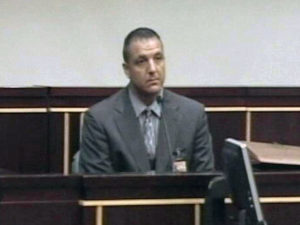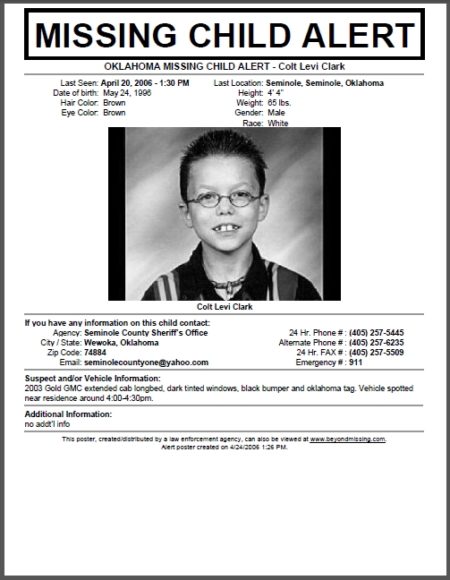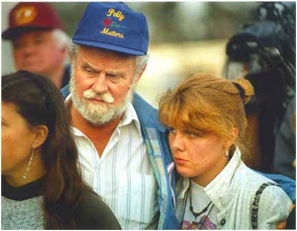Psychic detectives are the vanguard of a second wave of predators that also includes tabloid journalists, cheesy defense lawyers and photo-op politicians. They use tabloid newspapers and talk shows to boast about their accomplishments and predict success. They materialize whenever children are kidnapped and circle the cases like vultures on a fresh carcass.
They scan the media for the haunting eyes of desperate parents willing to do anything to recover their children and then they show up on your doorstep, literally or figuratively, to make the pitch. They claim to be on the cutting edge of communications, able to predict future events and reach into heaven and hell with their mind. They hold your hand, massage your psyche and convince you that the only thing separating you from their extraordinary gift is your money. However, some simply require airfare and living expenses, what we call a vacation. They seem to answer the prayer that ends the nightmare, but only if you can afford the ticket.
Frantic parents will do anything and they offer something, which is better than nothing. Few of us posses the resources to underwrite crisis, let alone psychic detectives so they should be reminded that a substantial reward awaits whoever solves the case and returns the stolen child.
Although that strategy eliminates most psychics, some maintain a foothold by appealing to superstitiously vulnerable family members. They make provocative predictions. In California, rolling hills, a road or highway, perhaps a building or a bubbling brook. In Arizona, sand dunes replace rolling hills and cactus substitutes the bubbling brook: In other words, they describe ninety-five percent of the geography of the western United States.
Psychic detectives do not posses supernatural insight, they do not converse with the missing or the dead, they never bring children home. However, their rambling predictions may have filled in enough gaps to pad their resumes and claim the reward.
A few months after Polly was recovered a psychic claimed that she solved Polly’s case on the television program Hard Copy. Not only was she using my daughter’s death to promote herself, but she also dismissed all of the wonderful people: police, media, and volunteers who worked so hard and tirelessly to locate my child.Â
In truth, that psychic detectives contribution to the case was counter productive. As always seems to be the case with psychic predictions, her interference created distraction. Law enforcement resources are diverted toward useless endeavors as phantom leads disappear into thin air. One cold and dark November evening many of us were lurking around somebody’s property because the psychic said that it held the key to my daughter’s disappearance. With the heightened sense of paranoia that already existed in the community that property owner would have been well within his rights to blow us away on the spot for trespassing. We were very fortunate that night, because although he did angrily confront us, he had absolutely nothing to do with the crime we were investigating.Â
In the end, and despite their protests, there is not even one case of a psychic truly assisting or solving a missing child case. It’s just smoke and mirrors. Their references do not support their claims and law enforcement cannot acknowledge their existence. Instead, their wishful thinking collides with your desperate hope and leaves you diminished.Â
Unfortunately, the next time a little child is kidnapped and mom and dad reach the end of their emotional string the vague, empty promises of the psychic detective will rebound off the stark walls of the missing child’s bedroom and a photo or toy will be palmed as the negotiations are engaged. It is inevitable: I predict it.
 responsibilities; and she had a circle of ever changing hot-body friends that would host her at trendy nightclubs and in-house parties.
responsibilities; and she had a circle of ever changing hot-body friends that would host her at trendy nightclubs and in-house parties.  responsibilities; and she had a circle of ever changing hot-body friends that would host her at trendy nightclubs and in-house parties.
responsibilities; and she had a circle of ever changing hot-body friends that would host her at trendy nightclubs and in-house parties. 

 including Zanny  the nanny, were fantasy, and that her convoluted explanation that, “
including Zanny  the nanny, were fantasy, and that her convoluted explanation that, “


 addresses and IM handles are not required simply because the Internet was not a factor in the mid-90’s when sex offender registration and community notification laws were written. CAL E-STOP would have dragged Megan’s Law into the 21st
addresses and IM handles are not required simply because the Internet was not a factor in the mid-90’s when sex offender registration and community notification laws were written. CAL E-STOP would have dragged Megan’s Law into the 21st
 dominate our emotions. But, because of our experience, professionalism and issue knowledge the KlaasKids Foundation can be a stabilizing force after a family invites to search for their missing child.
dominate our emotions. But, because of our experience, professionalism and issue knowledge the KlaasKids Foundation can be a stabilizing force after a family invites to search for their missing child.



